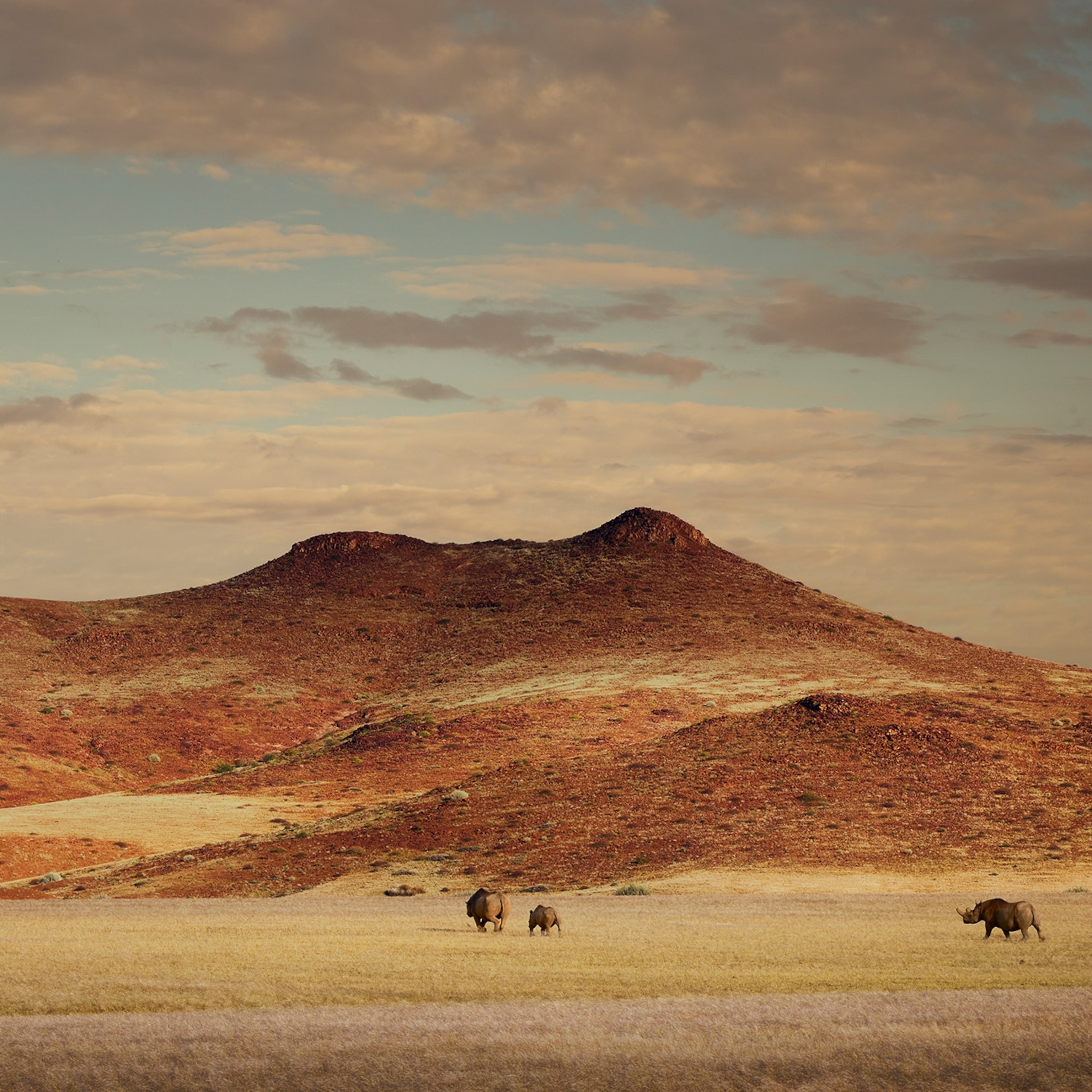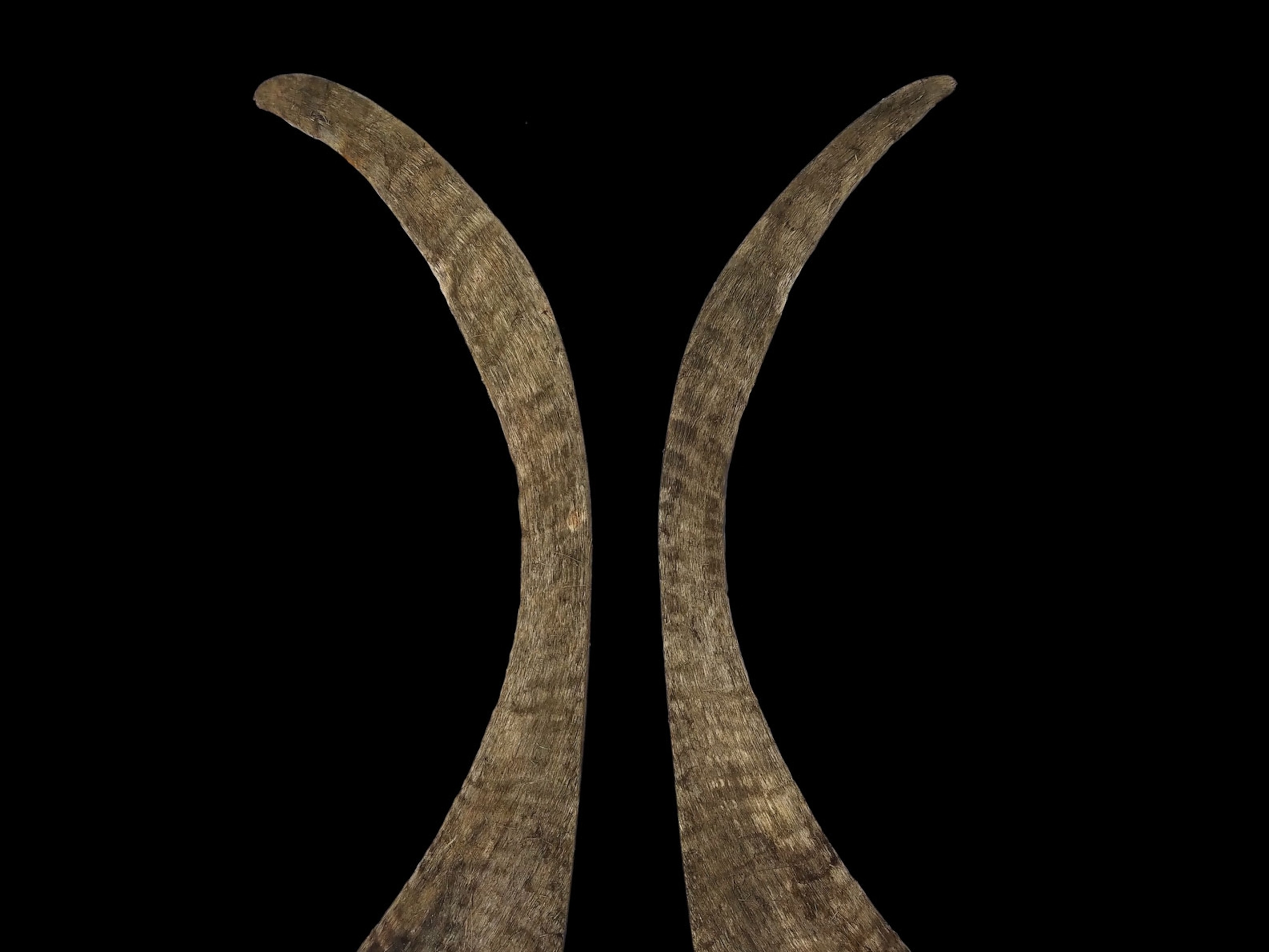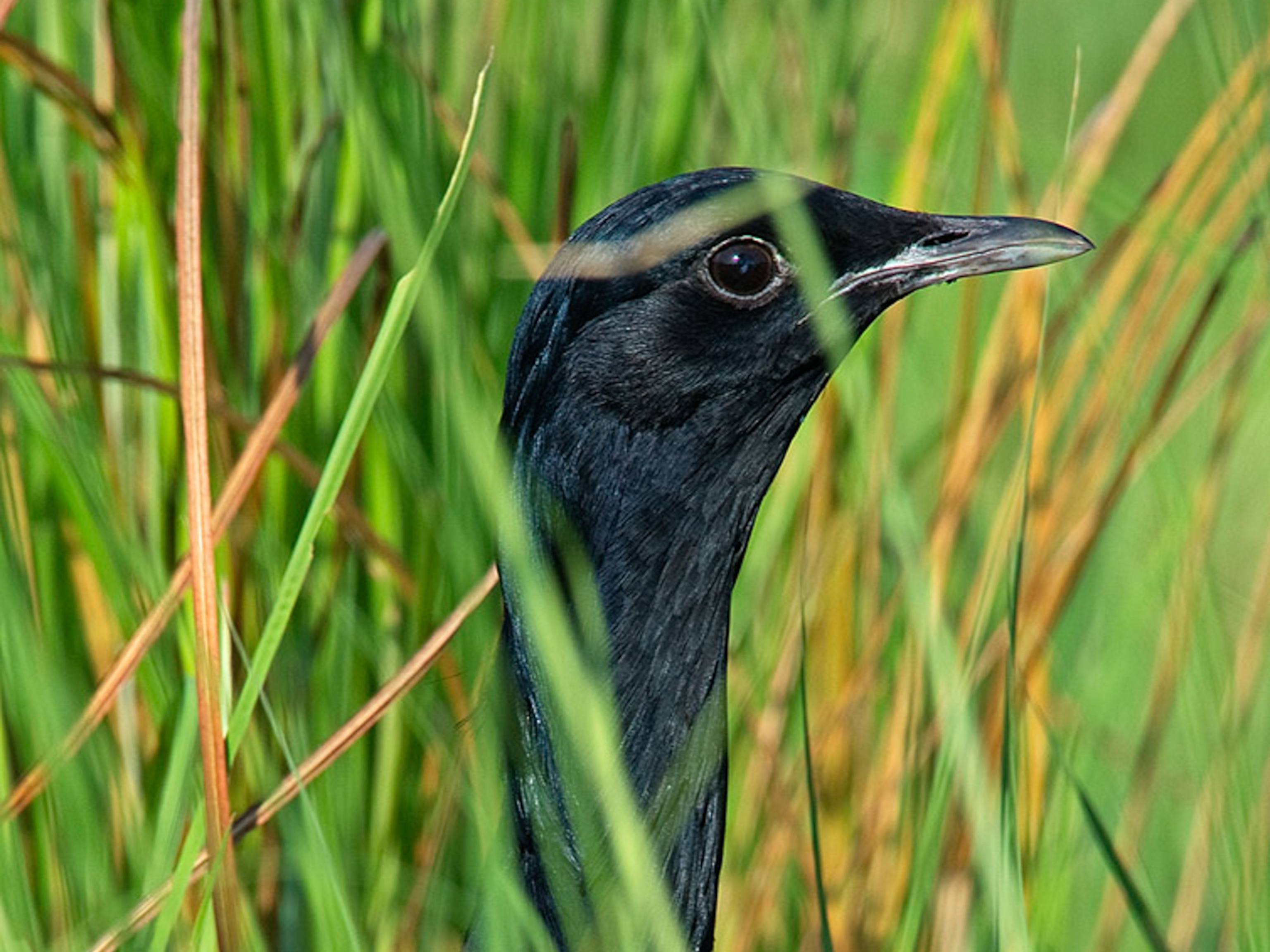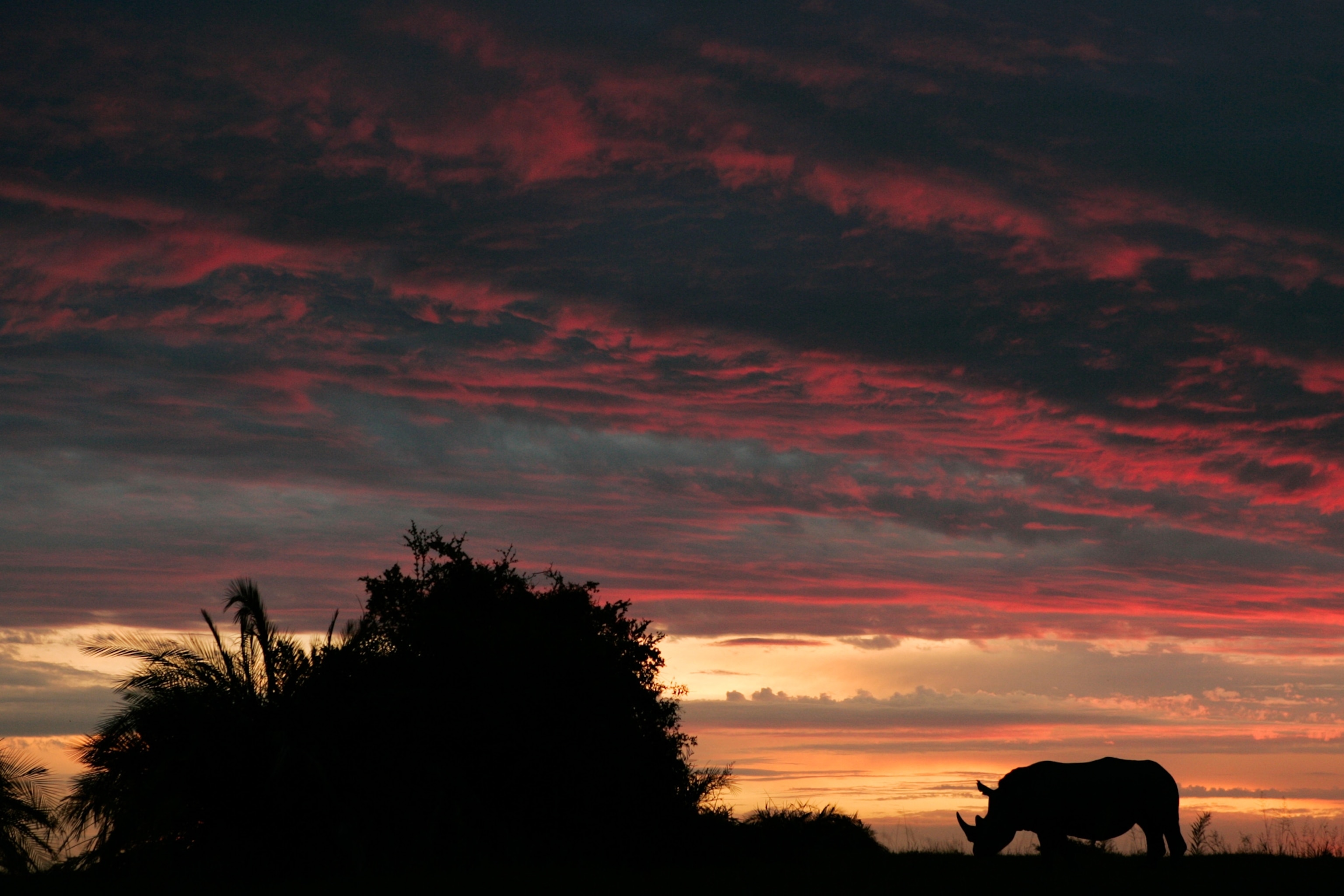
Q&A: Can Airlifting Rhinos Out of South Africa Save the Species?
In 2015 an organization called Rhinos Without Borders will move a hundred rhinos from South Africa to Botswana.
Over the past three decades National Geographic Explorers-in-Residence Dereck and Beverly Joubert, who are based in Botswana's Okavango Delta, have focused their movie and still cameras on animals ranging from elephants and zebras to lions and leopards.
In 2009 the Jouberts, with the help of the National Geographic Society, formed the Big Cats Initiative to halt the decline of lions, leopards, cheetahs, tigers, and other animals. Now the Jouberts have launched a new initiative, Rhinos Without Borders, to help save Africa's rhinos.
Beginning in January 2015, they will move a hundred rhinos from South Africa to Botswana.
South Africa holds upwards of 80 percent of the no more than 26,000 rhinos left on the continent, a large share of them in Kruger National Park.
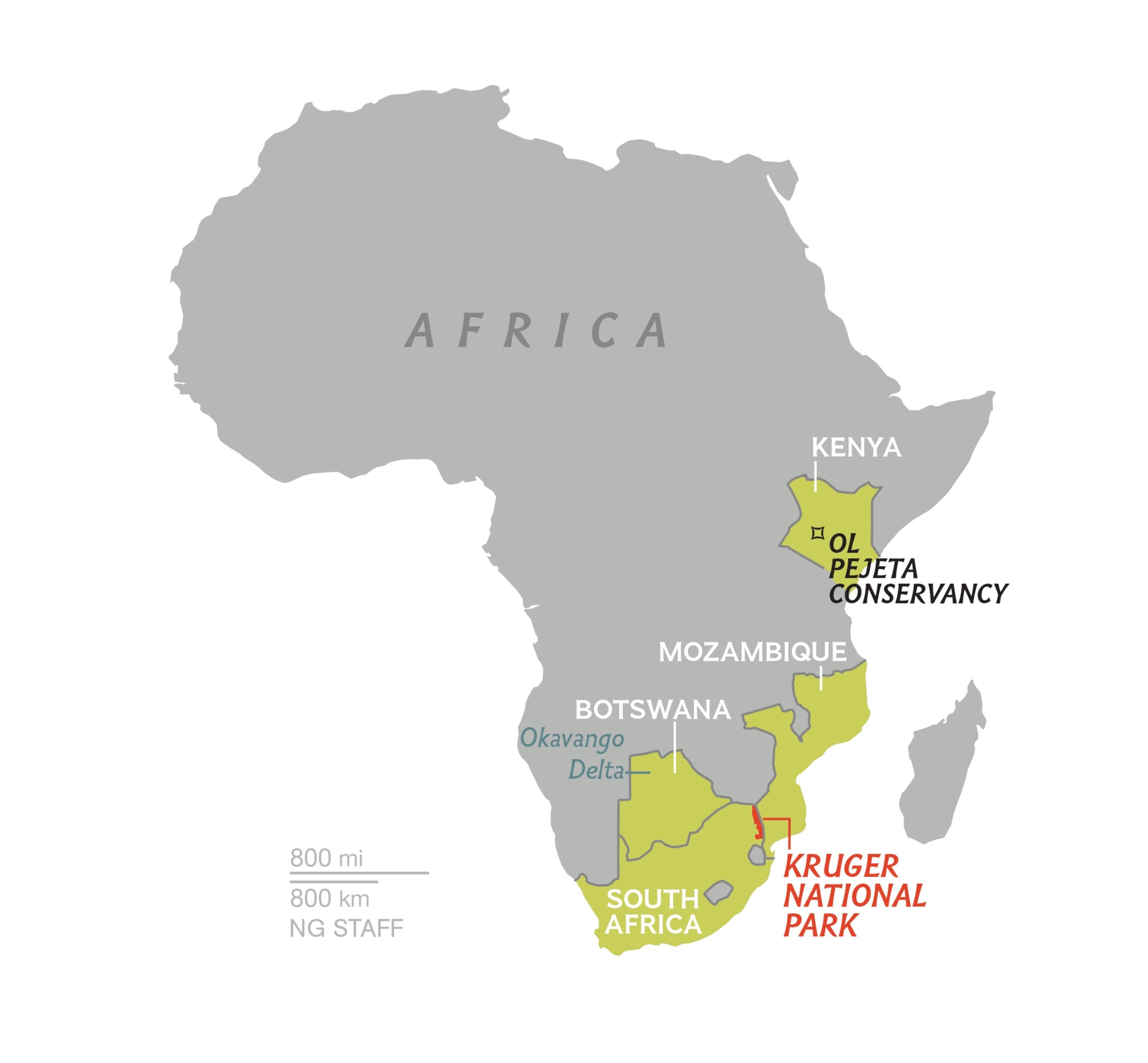
Poaching of rhinos for their horn has reached catastrophic levels. According to the Oxpeckers Center for Investigative Environmental Journalism, 1,004 rhinos were killed in South Africa last year. So far this year the number has climbed to 618, with the toll in Kruger at 400.
Moving rhinos, which can weigh more than three tons, from one country to another is a costly, logistically challenging endeavor. But the Jouberts say that relocating even only a hundred of South Africa's rhinos is an urgent and necessary strategy to sustain a species they believe will be lost within five to ten years if the illegal killing continues at the present rate.
You've filmed rhino relocations [see a clip of the Jouberts' film Rhino Rescue] in the past, but this is the first time you've been at the helm of a project of this nature. Why did you decide to take this on?
When you mention rhinos in conservation circles, there's always the same response: People just hang their head and say, What a disaster! The poaching levels are so high—last year South Africa lost 1,004 rhinos. Ten years ago we lost four rhinos. The 1,004 from last year, by the way, are the ones that we know of. But what happens in remote areas—even in Kruger—is that rhinos have been poached but aren't always found. The carcasses are possibly eaten by vultures before anyone gets there. So I think we can add at least 10 percent to that number.
A lot of good people and a lot of money are involved in trying to protect them, but we're still losing them at an increasing rate. So we said, Here's one option: Botswana wants rhinos. And Botswana has the lowest poaching rate in all of Africa.
It's as much a story of moving a hundred rhinos as it is about spreading the risk. One of the worst things we can do is continue to keep the entire pool of assets in one place. This relocation project will be making it harder for poachers to come in and hit a hundred rhinos.
We've always felt that we must be optimistic somewhat. We absolutely just cannot give up. If this works out, we can quite possibly do this throughout Africa.
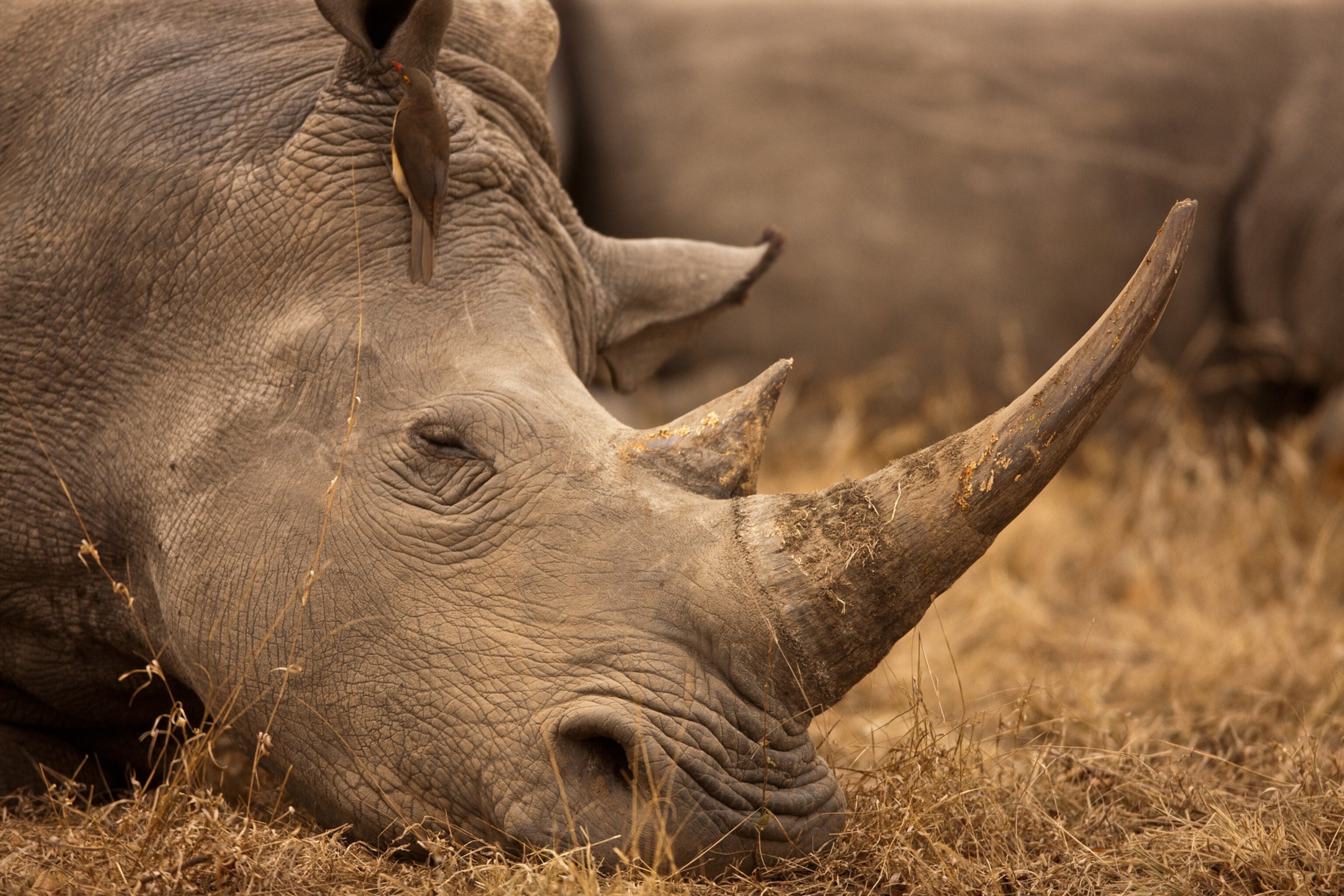
Have rhino relocations been successful before, and do you have a model you're using? For example, Ol Pejeta Conservancy in Kenya says it is the largest black rhino sanctuary in East Africa, after a historic relocation project in 2007.
Rhinos are moved a lot in southern Africa. There's a whole game-capture industry in South Africa. There are very professional teams that move rhinos from parks to private land, from private sellers to buyers. Each year there are game sales and auctions, and there are always rhinos for sale. So the teams that are doing this relocation with Rhinos Without Borders are well-heeled.
As for cross-border relocations, I believe about 50 rhinos in the last ten years have been relocated from South Africa into Botswana.
What's the mortality rate with these moves?
Between 2 and 5 percent. We weigh that rate against the reality of letting the rhinos stay where they are and be poached. Every time you move rhinos, you tranquilize them, which is a risk. But there's been quite a lot of science around moving them. Veterinarians—they have it right down to a fine art at this point.
Will any of the rhinos come from Kruger?
We don't know yet how many will be coming—we hope some. We're in discussions with SANParks. Most rhinos in South Africa are in Kruger and KwaZulu-Natal National Park, as well as private land. We know at least 44 will not be coming from Kruger. At least 40 will come from other parks. SANParks also oversees lots of little parks, and some have rhinos. It would be foolish for us to give too much information because of the security concerns right now—we're all hearing that the poachers are getting way more advanced.
Why do you think Kruger is considering moving rhinos? Is this an indication that it can't combat poaching effectively?
What it does say is that a very good conservation strategy is to move rhinos away from the poaching. There's a concentration of rhinos in Kruger that are easy to get to, and there's also a very porous border with Mozambique. There's been a discussion of 250 rhinos being moved, or 500.
I want to add that the street value for rhino horn, if it's to be believed, is $65,000 a kilo [2.2 pounds]. Which means it's really worthwhile to take a risk killing a rhino in South Africa. Chances are, if you're a poacher there, you won't be shot or killed.
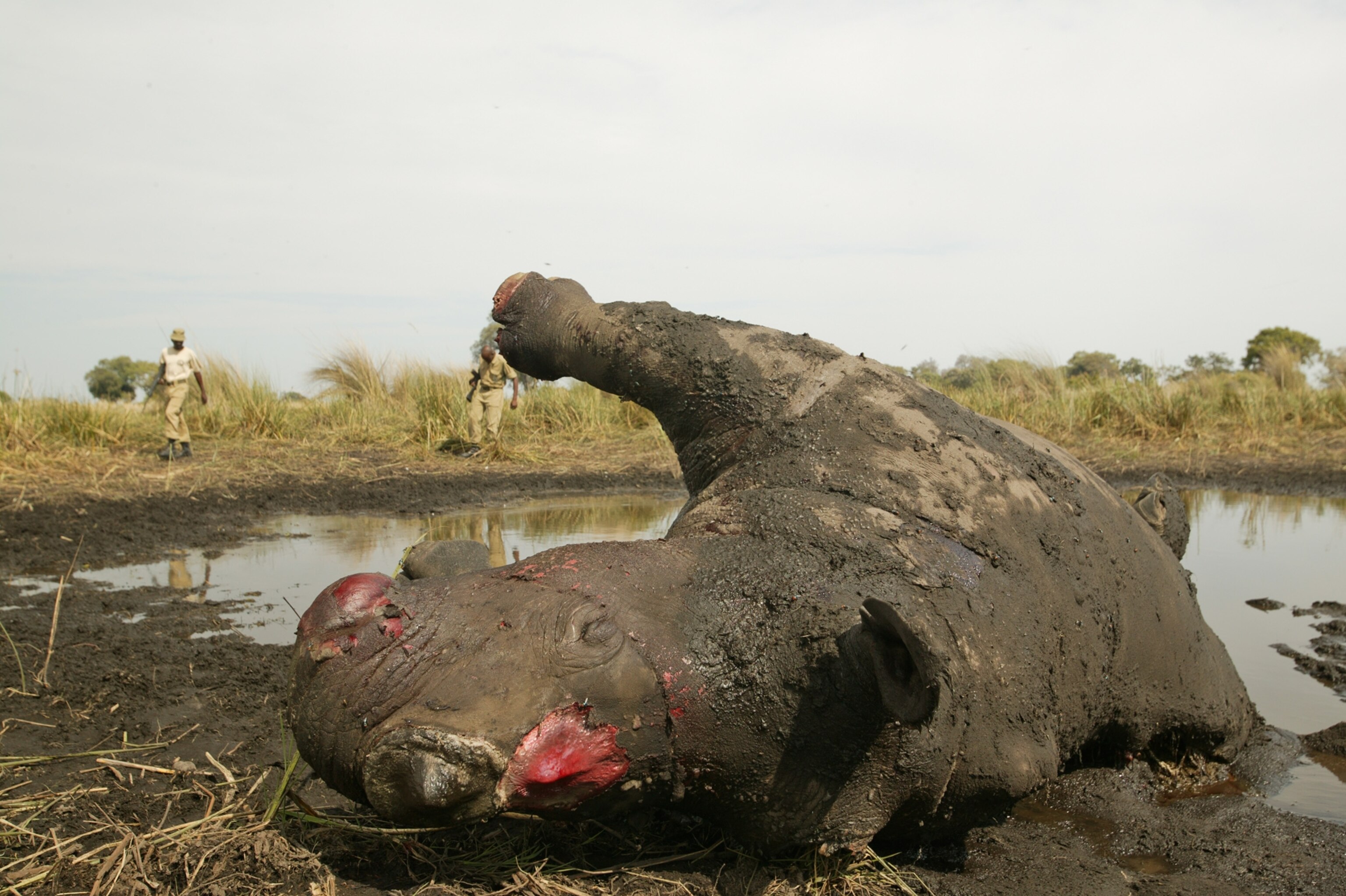
Did you bring this idea to the Botswana government, or did they approach you?
We approached them, about a year ago.
Are you purchasing the hundred rhinos, or are they being provided as part of a collective effort to save the animals?
Largely they're being donated to the Botswana government. We'll have to purchase some. We want to leave cash behind to aid antipoaching efforts in the source country. But $45,000 is the average cost to move a rhino from South Africa to Botswana.
There's a tourism component to this, correct?
Right. Although we're leading the charge, we don't want this to be a Joubert project. This is an unbranded effort and the launching of a campaign that says we can save the rhinos. Two tourism companies, Great Plains Conservation and &Beyond, are behind this. [Great Plains Conservation was co-founded by the Jouberts; Dereck is CEO.] We reached out to &Beyond because they've recently moved rhinos.
The tourism components are that people who donate above a certain level can participate in this. Also, if you stay at Great Plains, you can participate in the tracking of the rhinos once they've been released.
You plan to begin moving rhinos in January 2015. What are the biggest challenges, and how long do you anticipate it'll take to move them all?
Cost is one, and we're still in the phase of fund-raising. It costs us about $45,000 to move a single rhino. The other is the rhinos' security. Putting a hundred rhinos in one location—Botswana—is a security risk. We're adapting the project so we don't move a hundred at one time. They'll be going to a variety of secret locations in Botswana. We'll move them over a period of four or five months.
They're going into the wild in these locations?
Yes. Our ambition is to repopulate the rhino in Botswana.
Please describe the moving process.
A rhino is identified, and a helicopter comes in, and the animal is darted from the air with M99 [a sedative]. Then you get blood samples and as much information while it's sedated. When that's finished, you apply an antidote called M55, then you cover the rhino's eyes with a towel—it's still groggy. The rhino is then roped up and walked into the back of a container, optimally without any stress.
The rhino is loaded onto a truck and driven to a quarantine boma [enclosure]. Then it goes through a six-week quarantine period. At this point the rhinos are almost hand-reared—you virtually feed them by hand.
The next stage is you sedate them and put them onto aircraft to Botswana. Trucks distribute them to another enclosure. They're assessed for their health, and if they're doing well, they're set free.
How much of a concern is the move's disruption to rhino families?
Rhinos don't have a big herd structure. The biggest group we've seen is 14. More frequently it's a solitary female and a calf, and males come through occasionally. Because they don't form into bonded kinship groups, this makes it easier in the translocation. As long as you're not separating females and offspring, you aren't disrupting a family.
How are candidates for moving identified?
The source crews—the people we'll get the rhinos from—will identify them months in advance. There'll be a logbook on each animal. You want to choose healthy animals, with as little stress as possible to the populations you leave behind.
Rhinos close to giving birth—we absolutely don't want to risk that. And males that are really old. It's going to be a cross-section mix of animals, Some big, some small, some pregnant, some not. Certainly we want to avoid moving females that have offspring by their side.
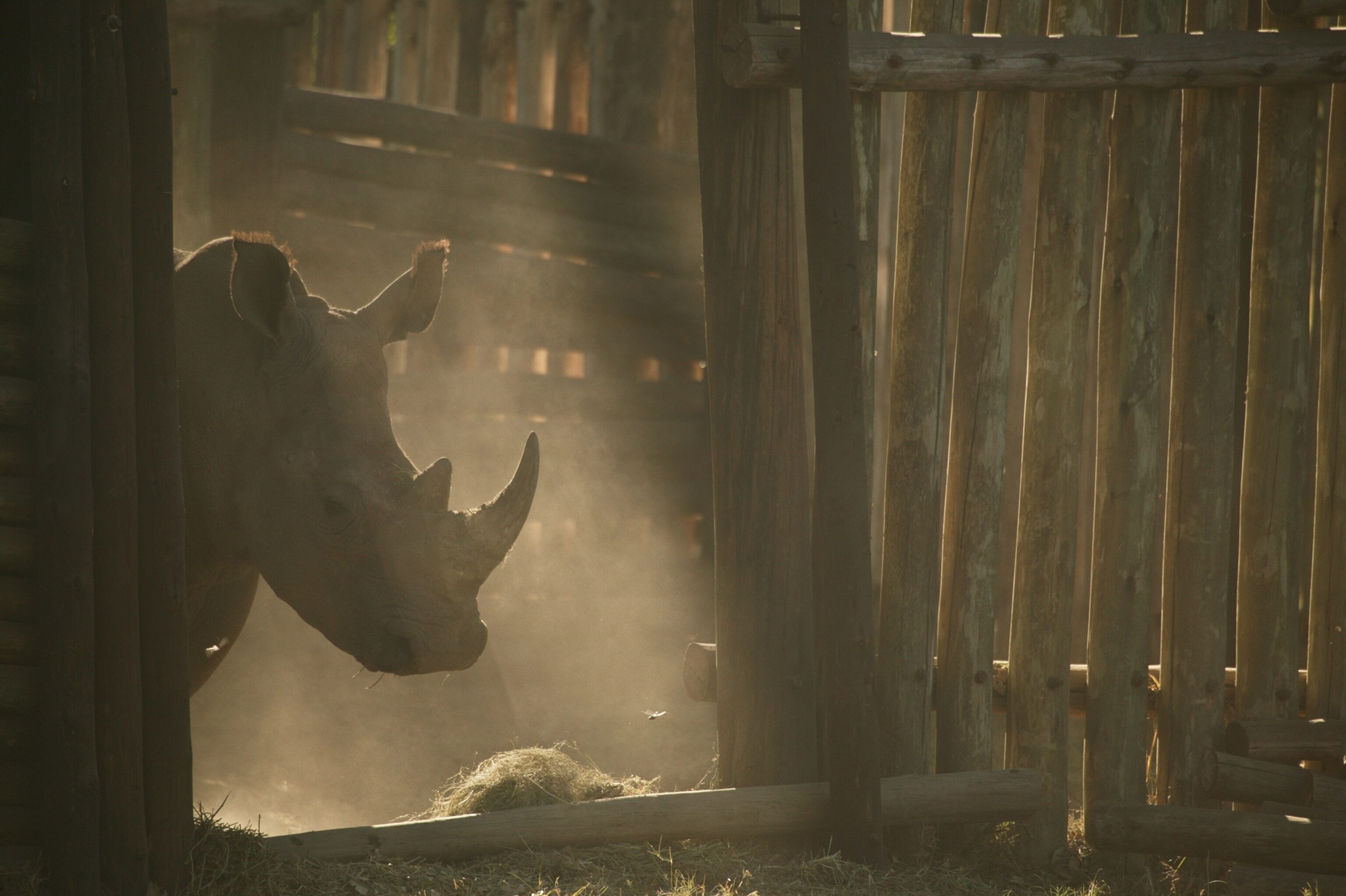
Once the rhinos arrive in Botswana, how do you know they'll be safe?
Botswana has one of the most robust antipoaching efforts in Africa. Well trained, experienced, and they've been doing this for the last 14 or 15 years, if not more. It's the extension of the Botswana Defense Force—well funded and armed.
What's great about Botswana is that culturally and practically they're not arrogant. They realize they have to keep updating their equipment, so there's a real drive to make sure these forces are ready for poachers. There will be a ramped-up effort, the specifics of which I'm not going to tell you. But these rhinos are going to be protected.
Why do you think Botswana's poaching rate is the lowest in Africa?
We have the Botswana Defense Force in charge of antipoaching, and they have a "shoot to kill" policy. If you track elephant poaching statistics, we know we have some of the lowest elephant poaching in the world. We have few porous borders. We also have a big, wide wilderness area. If you look at poaching incidents, many are in small, contained areas. Furthermore, we virtually have no road access. It's easy in South Africa for poachers to drive a tar road, pick a spot to cut a fence, walk through it, and kill a rhino. That's almost impossible in Botswana.
Finally, we have one of the lowest corruption rates. In Africa there's a saying: One rhino horn takes at least one corrupt official.
What about the issue of trophy hunting?
I don't think many of your readers would realize that while the rhinos are getting slaughtered left, right, and center, South Africa still allows rhino trophy hunting.
Animals on the decline shouldn't be trophy hunted—this is our belief, including with the Big Cats Initiative. Also, trophy hunting makes the local population feel a sense of displacement about their wildlife. They think, Why should our animals go to wealthy Westerners and not to us?
Trophy hunting was recently banned in Botswana.
Yes. Botswana canceled all lion hunting in 2004, and leopard hunting in 2011. And now in 2014, the rhino.
Can you talk about the debate over legalizing rhino horn?
There's a big move afoot on this, with some saying that we have this poaching problem because horn is a precious resource. Some are saying, Let's farm our rhinos, and let's cut the horn off, sell it, and then we can reduce the illegal demand, and then poaching will stop. That is a flawed argument. Not to mention, I don't know any farmer in the world who wants to bring his prices down.
You're perhaps best known for your work with big cats. How do you link that work to rhinos?
We believe very strongly there's a battle for Africa at play. And it'll be fought on three fronts: the elephant, cats, and the rhino. We're losing five lions a day, four or five elephants an hour, and a rhino every seven and a half hours.
If you take those three iconic species off the menu, that translates into an $80 billion revenue stream you'll lose. If you lose these animals, there'll be a collapse of both the ecosystem and the economy. So we realized we can't take on big cats without taking on the protection of the others as well.
A huge part of this has to be creating awareness—in Africa, Asia, and the West-blogging, going on news, pushing big media campaigns.
Also, from our side, we've spent our lives exploring Africa, making films, and having a fantastic time in the bush of Botswana, and we've tried to find ways to give back all the while. The rhinos are at this crisis point, and we'd like to give back to Botswana, which is where we've made our home.
Join a Twitter chat with the Dereck and Beverly Joubert to talk about conservation on Wednesday, August 6 at 12 p.m. ET. To participate, follow @dereckbeverly and @NatGeoLive and tweet your questions with #NatGeoLive.


